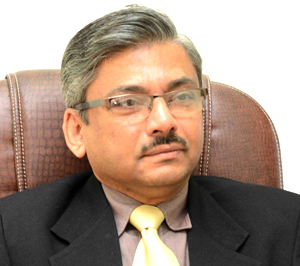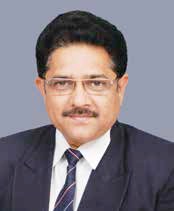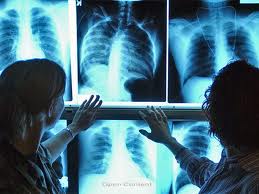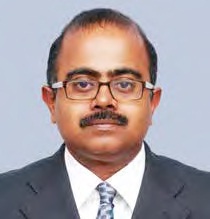
 Now we have competition where least invasive and least harmful technique would be used to treat patients. Says Dr Harsh Rastogi, Sr Consultant & Clinical Co-ordinator, Radiology Department, Indraprastha Apollo Hospitals. In conversation with Ankush Kumar, ENN
Now we have competition where least invasive and least harmful technique would be used to treat patients. Says Dr Harsh Rastogi, Sr Consultant & Clinical Co-ordinator, Radiology Department, Indraprastha Apollo Hospitals. In conversation with Ankush Kumar, ENN
How do you see the evolution of Indian Diagnostic Industry over the years?
When you look back to those times when CT, Ultrasound and MRI were not available, there was a clinical art of diagnosing patients by palpitating or putting the hands on the effected body part and then it used to be confirmed by the open surgery. We have grown not only in Diagnostics but we have started treatment in the department of Radiology. So now we are treating patients by Angiography or DSA techniques or giving a diagnosis by putting in a needle or even Non-Invasive treatment such as High Intensity Focused Ultrasound. We are now dependent on diagnostic and imaging to diagnose the disease and when the diagnosis is done then we can use the least invasive way of treatment in Radiology department. Radiology has to contribute much more in coming years. One of the examples is of LIVER Cancer, which is very difficult to treat but now we can do the diagnosis of LIVER cancer, decides whether surgery is possible or not. If surgery is not possible then we can treat it with Chemotherapy which is given locally into the tumor by Angiography or by Radioembolisation. Therefore I believe that Radiology has completely revolutionised the healthcare sector.

How do you think Technology can bring more efficiency to the doctors in the Healthcare sector?
With improvement in technology, improvement in the computer graphics, processing speed, software availability and computer technology. We can now see very minute problems which can be diagnosed. Technologies like 64 slice, 128 slides, 256 slice and 320 slice CT scans can pick up even a very small lesion which was not being picked up earlier, also the resolution of Imaging has improved tremendously. Then what has happened is the imaging quality has changed, we are not dependent on one image, today we also talk in terms of physiology and pathological changes that have occurred. Once you have this information in digital form you can use the networks that are available, the softwares that are available. You can send these images across states or even other countries for second opinion and this is very fast and accurate process.
“We are now dependent on diagnostic and imaging to diagnose the disease and when the diagnosis is done then we can use the least invasive way of treatment in Radiology department”
What kind of state-of-the art facility we have in the Apollo Diagnostic Center as compared to some of the other superspecialty hospital across the country?
Apollo as a group has always been the first in a lot of things, we were one of the first few to acquire multi-slide CT scanner like 64 slice Toshiba scanner that we have. In Chennai we installed the first CT scanner, which was 320 slice, very few centers have that capability. Moreover the first 3 Tesla MRI scanners were installed at Apollo and we were the one to start this trend, a revolution in North India. We know that technology is very helpful in making the critical diagnosis which is required for appropriate treatment. We were the first few to start Neuro intervention work in North India in 1996. We have the first PET MR ie the MR image and nuclear medicine (PET scanner) is fused together is very useful for Cancer patients. This was the third or fourth in the world when it was brought.

Do you think that every Superspecialty Hospital should have an in-house Radiology department?
In-house Radiology Department is a must in any tertiary care or secondary care hospital because then the hospital does things the way they want to do. For instance a study for liver in our hospital is done in three phases the arterial phase, the capillary phase and the venous phase whereas at other places it is a single phase. You can get a lot of information from a triplephase scan than a single-phase study. We have the first HIFU (High Intensity Focused Ultrasound) machine, which also uses MRI for treatment of uterine fibroids. The scan which is done for a HIFU patient is very different from any scan which is done outside. So we have developed our own protocols and these are the ways we attract a lot of foreign patients. HIFU treatment is so popular that we get patient from Africa and Middle East for the treatment of fibroids.
What are some of the new trends and techniques that are picking up in the Diagnostic Industry?
There are some of the new techniques that are coming up in MRI. In MRI there is a potential of whole body imaging, its been practiced but at very few centers. There are some new sequences that have recently evolved which can give you a lot of information about the extent of disease for example cancer. Now, we can know through MRI that whether the Cancer is limited to the liver, intestine or it has spread to the lungs or to the brain. The other is, today a number of cancers are treated, by Gamma knife or X-Knife or Cyber Knife, they encounter problems because of radiation. I think in the next few years much less harmful radiation such as HIFU would be used to treat a lot of cancers and diseases. I am sure there will be competition where least invasive and least harmful technique would be used to treat patients.
A recent survey has revealed that India has acute shortage of Radiologists. So what can be the role of Tele-Radiology in fulfilling the demand for Radiologists?
In Tele-Radiology you do not require a Radiologist to be stationed at every primary health centers or at every nook and corner. If the healthcare center have the proper information about the disease then they only need the technician who can do X-ray or an Ultrasound. And if they think that this is something where we need an expert advice then there are so many ways of transmitting information to a central hub station which can be manned by doctors 24 hours, seven days a week and 365 days a year
Be a part of Elets Collaborative Initiatives. Join Us for Upcoming Events and explore business opportunities. Like us on Facebook , connect with us on LinkedIn and follow us on Twitter , Instagram.










